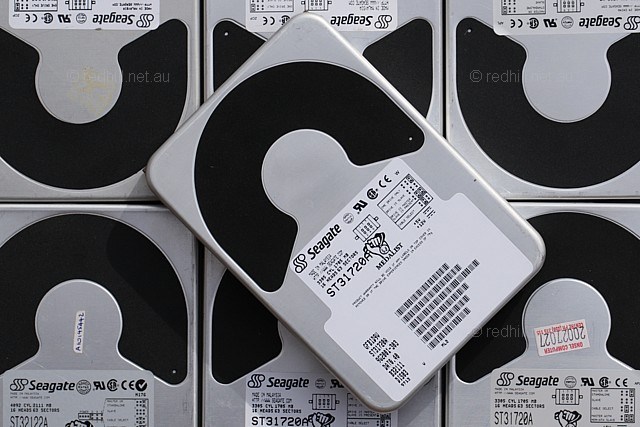
Photo: Red Hill.
Seagate Medalist 1720 and 2531
Another pair of drives from the Conner half of Seagate; these combined Seagate speed with the Conner look and feel — including, unfortunately, the traditional Conner fetish for having odd-ball jumper settings to make life difficult in the workshop.
High areal density made them surprisingly fast for 4500 RPM units (notice the relatively high internal data rate), and they had the usual excellent Seagate reliability. These had a very long market life; the 1.7 in particular saw out two or three generations of other drives and sold well throughout its career. Notice how these typical value-for-money drives had similar performance to the previous year's high-speed premium drives (like the Deskstar 1.7 and the Medalist SL 1.28.
The Medalist 1722 was essentially the same as the 1720 but with ATA-33 support. There was a reasonably well-publicised compatibility problem between some early revisions of the 1720 and early-model motherboards using the then-new 3 volt chipsets like the Intel TX and the SiS 5591. We hardly ever saw it for ourselves though, perhaps because we were never big fans of the TX and didn't sell many.
The 2.5GB ST32531 was essentially the same drive as the Medalist 1.7, but with six heads rather than four. It was usually about $20 cheaper than a higher performance 2GB drive, and $20 more than its primary competitor, the still slower Quantum Bigfoot.
| Performance | 0.89 | Reliability | AAA |
| Data rate | 88 Mbit/sec | Spin rate | 4500 RPM |
| Seek time | 12.5ms | Buffer | 128k |
| Platter capacity | 850MB | Encoding | PRML |
| Form | 3½" half-height | Interface | see below |
| ST31720A | 1.71GB | 4 TF heads mode 4 | **** |
| ST31722A | 1.71GB | 4 TF heads ATA-33 | **** |
| ST32531A | 2.56GB | 6 TF heads mode 4 | ** |
| ST32532A | 2.56GB | 6 TF heads ATA-33 | * |